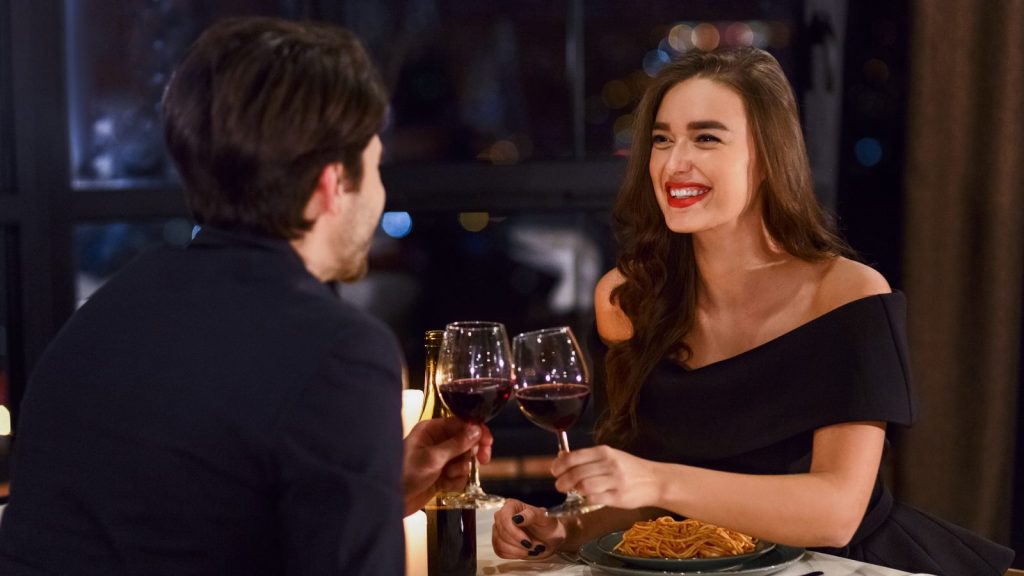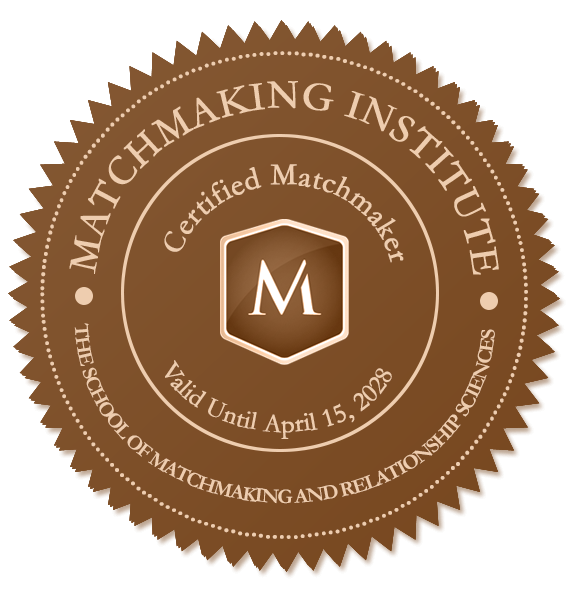A Journey Through Time
Matchmaking, often heralded as the art of orchestrating romantic unions, possesses a rich and intricate history woven into the fabric of human civilization. This article embarks on an illuminating journey, seeking to comprehensively explore the nuanced evolution of the history of matchmaking from its ancient origins to the complexities of the modern era. The practice of matchmaking, deeply ingrained in the cultural and societal tapestry, reflects the ever-changing dynamics of human relationships and the diverse ways in which societies have approached the union of individuals throughout history.
By immersing ourselves in this comprehensive exploration of matchmaking’s history, we aim to unravel not only the chronological progression but also the underlying motivations, cultural nuances, and societal influences that have shaped the pursuit of romantic unions. Through this deeper understanding, readers are equipped to embark on their modern matchmaking journeys with a nuanced appreciation for the historical forces that continue to resonate in the intricate dance of love and connection.
The History of Matchmaking:
Table of Contents
Ancient Practices:
In the annals of human history, matchmaking emerges as a practice deeply embedded in the fabric of ancient civilizations. The rituals, traditions, and societal significance surrounding the history of matchmaking are diverse and profound.
In ancient matchmaking, religious leaders and elders played a pivotal role, infusing ceremonies with spiritual significance and practical wisdom. Beyond merely blessing unions, these figures were integral in overseeing the entire matchmaking process. Religious leaders ensured that marriages aligned with spiritual doctrines, adding a divine dimension to the unions. Meanwhile, elders brought practical experience to the table, assessing familial compatibility, social standing, and the potential for fruitful alliances.
Their involvement extended beyond superficial considerations, emphasizing the long-term success and harmony of the union. Marriages were seen not only as individual choices but as crucial elements for societal stability. The matchmaking orchestrated by religious leaders and elders was a blend of spiritual sanctity and practical wisdom, adapting to evolving societal norms while maintaining a sense of tradition and stability.
In essence, the influence of religious leaders and elders went beyond symbolic gestures, shaping cultural and communal aspects of marriages in ancient societies. Their guidance drew on an understanding of human relationships and community dynamics, reflecting a balance between spiritual sanctity and the practicalities of mate selection.
Medieval and Renaissance Matchmaking:
The medieval and Renaissance periods marked significant shifts in societal structures, and matchmaking evolved in response to these changes. The role of families, social status, and economic considerations in matchmaking during these times reflects the broader societal dynamics that shaped the institution of marriage.
During the Medieval era, marriages were often strategic alliances serving political and economic purposes. Noble families, in particular, engaged in arranged unions to consolidate power and wealth. Historical records from the time reveal a marriage landscape dominated by practical considerations, where romantic love took a back seat in mate selection.
The Renaissance marked a gradual shift towards a more nuanced appreciation of love and marriage. While arranged marriages persisted, there was an emerging emphasis on personal choice and emotional connection. The advent of courtly love during this period, as depicted in literature and the arts, played a crucial role in shaping societal attitudes towards romantic passion.
Historical records illustrate the economic aspects of matchmaking. Dowries and inheritance played vital roles in negotiations, impacting social status and financial stability within unions. This economic backdrop, supported by various historical accounts, underscores the complex interplay of love, societal expectations, and financial dynamics during these historical periods.
Role of Matchmakers in the 19th Century:
As the 19th century unfolded, matchmakers played a pivotal role in facilitating unions. The Victorian period, known for its strict societal norms, witnessed a nuanced interplay between tradition and changing values, with matchmakers navigating these complexities to forge alliances.
During the 19th century, the role of matchmakers became more nuanced. While arranged marriages persisted, there was a growing recognition of the importance of personal compatibility and emotional connection. Despite the societal expectations and familial considerations that influenced matchmaking during this period, many individuals skillfully navigated the delicate balance between tradition and evolving notions of love.
The 19th century also witnessed the emergence of new communication technologies, such as the telegraph and the postal service, which facilitated long-distance matchmaking. Correspondence and letters between potential partners allowed for a more extended courtship period and increased personal involvement in mate selection.
In conclusion, the role of matchmakers in the 19th century reflected a period of transition, influenced by evolving societal values and technological advancements. This is truly where we see a firm shift in the history of matchmaking overall. While the strict societal structure of past matchmaking still held firm, slowly we are starting to see the rise of individual choice as a facet of marriage and romance.
The Transformation of Matchmaking in the 20th Century:
The 20th century brought about seismic shifts in societal paradigms, and matchmaking underwent a transformation reflective of these changes. Industrialization, urbanization, and shifting gender roles reshaped the landscape of matchmaking. The traditional constraints of the past began to loosen, giving rise to new possibilities and challenges.
the 20th century witnessed a move away from traditional, institutionally arranged marriages towards relationships characterized by individual agency and personal choice. There was a marked shift in the understanding of intimate connections, emphasizing mutual emotional satisfaction and the continuous negotiation of the relationship’s terms.
During this period, the role of matchmakers diminished, and individuals gained greater autonomy in choosing their life partners. The emphasis shifted from pragmatic considerations such as social status and economic stability to the pursuit of personal fulfillment and emotional compatibility.
Moreover, societal changes, including the women’s liberation movement and shifts in gender roles, influenced the dynamics of matchmaking. The 20th century saw a greater recognition of gender equality, impacting how relationships were formed and sustained. The transformation of matchmaking during this era reflects a broader societal trend towards more egalitarian and individualized notions of intimacy and partnership.
Modern Matchmaking:
The dawn of the modern era ushered in a new chapter for matchmaking. In this section, we will explore the multifaceted aspects of modern matchmaking, delving into the impact of technology, the role of psychology, and the emergence of professional matchmaking services.
Technology’s Impact:
The advent of technology has irrevocably altered the landscape of matchmaking. Algorithms and data analysis now play a pivotal role in pairing individuals based on a myriad of factors. Technology has transformed the very essence of matchmaking, making it more efficient and, in some ways, more complex.
Psychological Compatibility:
In the modern era, psychology has become a cornerstone of matchmaking. Personality assessments, compatibility factors, and understanding the intricacies of human behavior contribute to the success of contemporary matches. The rise of ‘love languages’ as well as the ‘flag system’ have added a new dynamic to love and relationships. A new level of understanding provides new benefits as well as more challenges to overcome in the modern dating landscape.
Professional Matchmaking Services:
The 21st century witnessed the rise of professional matchmaking services, offering a personalized and scientific approach to finding compatible partners. Each service has its own unique service and perspective, while the industry standards constantly evolve.
Long gone are the ancient practices of matchmaking, moving forward to modern cutting-edge services and executive matchmakers. The professional matchmaking landscape is as diverse as the individuals seeking their expertise.
In tracing the history of matchmaking, from its ancient roots to its modern incarnations, we uncover a fascinating journey marked by cultural, societal, and technological shifts. As matchmaking continues to adapt to the ever-changing dynamics of human relationships, its rich history remains a testament to the enduring human quest for connection and companionship.
In the modern era, armed with the knowledge of how societal values, cultural norms, and individual autonomy have shaped the path to finding love, individuals embarking on a matchmaking journey can navigate this process with a heightened awareness. The diminishing role of external influences, such as religious leaders or societal expectations, allows for a more personalized approach to finding a life partner. The emphasis on emotional satisfaction and mutual compatibility encourages a focus on the quality of the relationship rather than external considerations.
Furthermore, acknowledging the historical struggles for gender equality reminds us of the importance of fostering relationships based on respect, shared values, and partnership. The lessons from history offer a guide for individuals seeking meaningful connections in the modern era, emphasizing the significance of open communication, mutual consent, and shared aspirations.
This article is a part of our educational series aimed at unraveling the multifaceted world of matchmaking. Read more about it on our blog.
Continued Reading:
- Westermarck, Edvard. “The History of Human Marriage.”
- Macfarlane, Alan. “Marriage and Love in England: Modes of Reproduction, 1300-1840.”
- Kane, Penny. “Victorian Families in Fact and Fiction.”
- Giddens, Anthony. “Intimacy Transformed? A Critical Look at the ‘Pure Relationship.'”
- Stephens-Davidowitz, Seth. “Everybody Lies: Big Data, New Data, and What the Internet Can Tell Us About Who We Really Are.”
- Chapman, Gary. “The Five Love Languages: How to Express Heartfelt Commitment to Your Mate.”

The History of Matchmaking
The History of Matchmaking is presented by Introductions Inc. Learn more about how our team can help you find love today.
